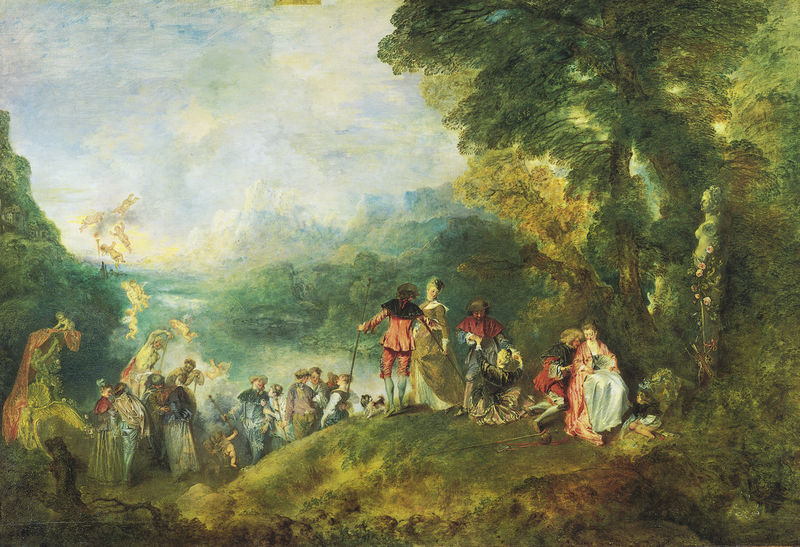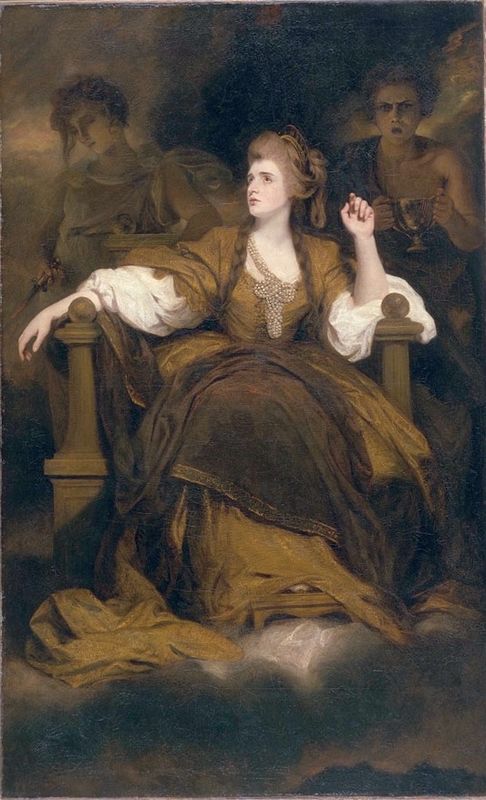The Poussinistes VS the Rubénistes was essentially a dispute among the members of the French Royal Academy of Painting and Sculpture, that erupted near the end of the 17th century. The conflict can very simply be described as drawing VS. colour, similar to the debate during the Renaissance in Italy, over disgno and colore.
The Poussinistes took their name from the artist Nicolas Poussin (b. 1594 - d. 1665) and the Rubenistes from the Flemish painter Peter Paul Rubens (b. 1577 - d. 1640). At the time this skirmish at the Academie occurred, both Poussin and Rubens were deceased, yet their influence on the art of painting in France was still quite alive.
The two opposing groups within the organisation were convinced of the supremacy of one specific element of the craft of painting, over another. The Poussinistes believed that very specific adherence to the rules of drawing were more important than the colour that was later applied. Line and form were their indicators of what produced a strong work of art. Below is an example of Poussin's work Madonna of the Steps, showing his mastery of the skill of drawing and skill in application of linear perspective. Poussin was one of the leading painters of his time, and in the movement now referred to as Rococo, that was then building momentum, despite the fact that Poussin adhered to the more Greek or Roman approach in his subjects often focusing on political, historical philosophy, and the noble.
The next painting is from the Flemish Master Peter Paul Rubens. I chose this painting, not only because it is appealing to me personally, but because it is an example of Rubens work that really shows his genius in the application of colour. The work is devoid of any hard lines and pulls you in with your heart rather, that your eye. This was the exact point that the Rubenistes were arguing, that colour underlines and enhances our instincts as humans, and we respond to the image with our hearts, not our heads. The Rubenistes promoted the idea that the enjoyment of a work of art was not strictly an intellectual experience to be analyzed, reserved only for the educated elite. Rather, that promoting the instinctive, human response to what the viewer is experiencing in the colour and light of a subject, is the key to an important painting.
 |
| Peter Paul Rubens, Portrait of Susanna Lunden 'Le Chapeau de Paille' ca.1614 |
 |
| Antoine Watteau 'Embarkation for Cythera' ca. 1717 |
The next work is one that I also find very appealing, on an instinctive, emotional level, despite the fact that the artist in question was considered to hail from the camp Poussinistes. An Englishman named Joshua Reynolds (b.1723 - d. 1792) and one of the founding members of the Royal Academy of Arts in London. The work below shows a portrait of a woman, Mrs. Siddon, as the title suggests, who was an actress of the day. The story of the painting and it's reception by the patron is fascinating, and one for another blog, however, I chose this work because it shows Reynold's use and respect for classical influence in style, and the drama of the picture is front and centre, all characteristics of Poussinistes.
 |
| Joshua Reynolds 'Mrs. Siddon's as the Tragic Muse' ca. 1784 |
Below is a work by Jacques-Louis David (b. 1748 - d. 1825), another Poussinstes artist from France. The work below not only tells the very dramatic story of the murder of a prominent and noble politician, Marat, a friend of David, but aside from the very serious subject matter, the bleakness of the scene, the very distinct and classical style depicted here is as overwhelming as the story. The form and lines of the piece are so strong and severe. The drama is pursued here by line and form. Yes. There is colour, and it is used effectively, for it is almost morbidly beautiful. But is is the hard lines of the painting that convey the emotion.
"Janson's Basic History of Western Art", Eight Edition, Upper Saddle River, New Jersey, Pearson Education, Inc., 2009, pgs. 8, 9, 407, 408, 409, 410, 429, 430, 431
Getlein, Mark. 'Gilberts Living With Art, Sixth Edition' New York, New York, McGraw-Hill, 2002, pgs. 411, 412, 413, 414



No comments:
Post a Comment